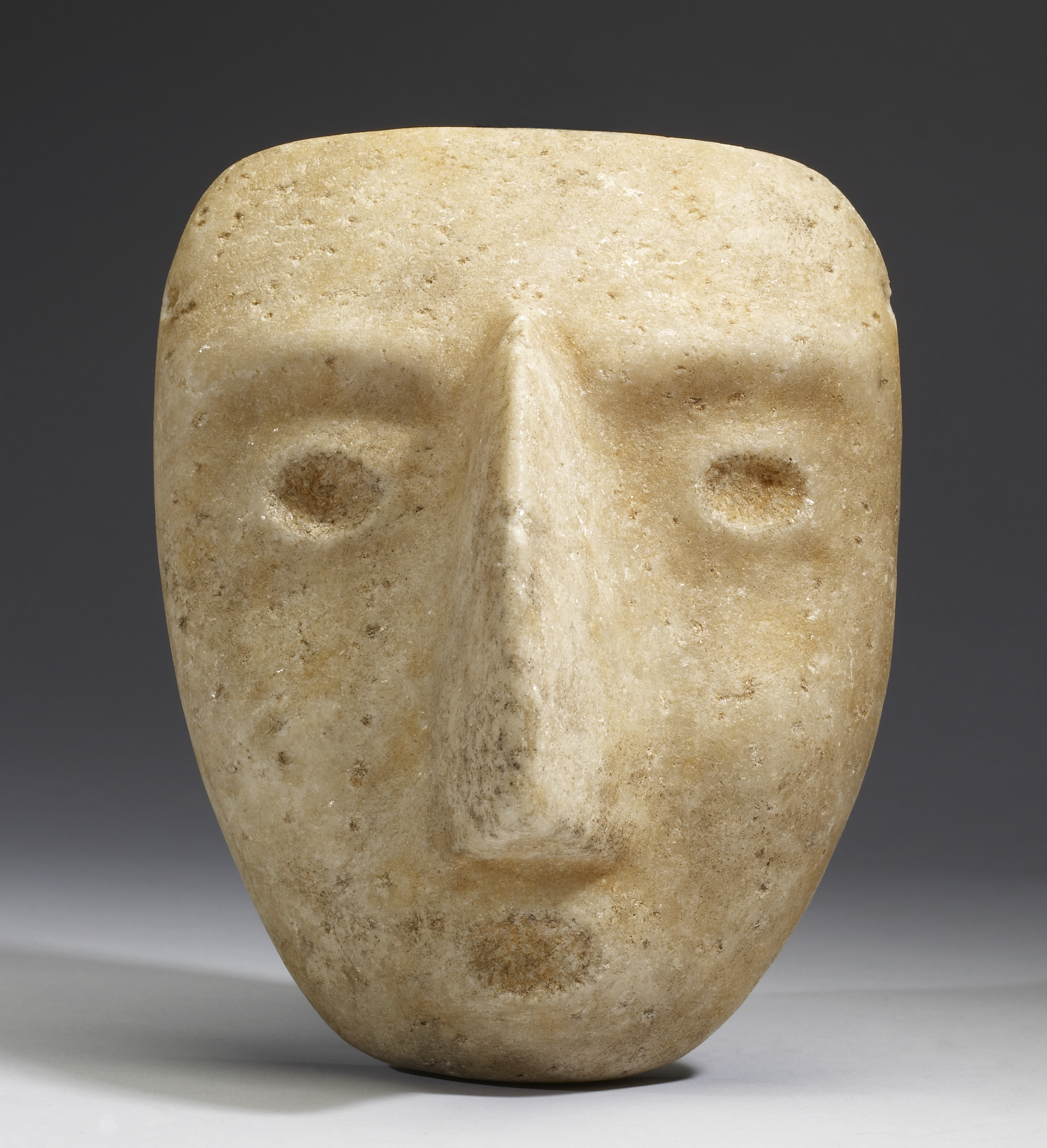Mask
(Ancient Americas )
This mask is a fine example of stone carving from the Late Formative or Late Preclassic period. Guerrero, the region from which the piece probably comes, is known for a wide variety of sculptural styles including Mezcala and Chontal. Ancient sculptors usually carved "tecalli," also called "alabaster" or aragonite, a calcium carbonate stone found in caves. Though few masks from any ancient American culture have been excavated archeologically, it is thought that they were probably tied to the funerary bundles of the nobility.
As with many Sulpetec masks, the large aquiline nose dominates the face when viewed in profile, but the subtle modeling of the cheeks and browline create a well-proportioned impression when viewed frontally.
Provenance
Provenance (from the French provenir, 'to come from/forth') is the chronology of the ownership, custody, or location of a historical object. Learn more about provenance at the Walters.
Dr. Milton Leof, New York; Mr. John A. Stokes, Jr., New York, October 15, 1973, by purchase; Walters Art Museum, 2001, by gift.
Geographies
Mexico, Sultepec (Place of Origin)
Measurements
7 1/2 x 5 7/8 in. (19 x 15 cm)
Credit Line
Gift of Mr. John A. Stokes, Jr., 2001
Location in Museum
Accession Number
In libraries, galleries, museums, and archives, an accession number is a unique identifier assigned to each object in the collection.
In libraries, galleries, museums, and archives, an accession number is a unique identifier assigned to each object in the collection.
29.4




